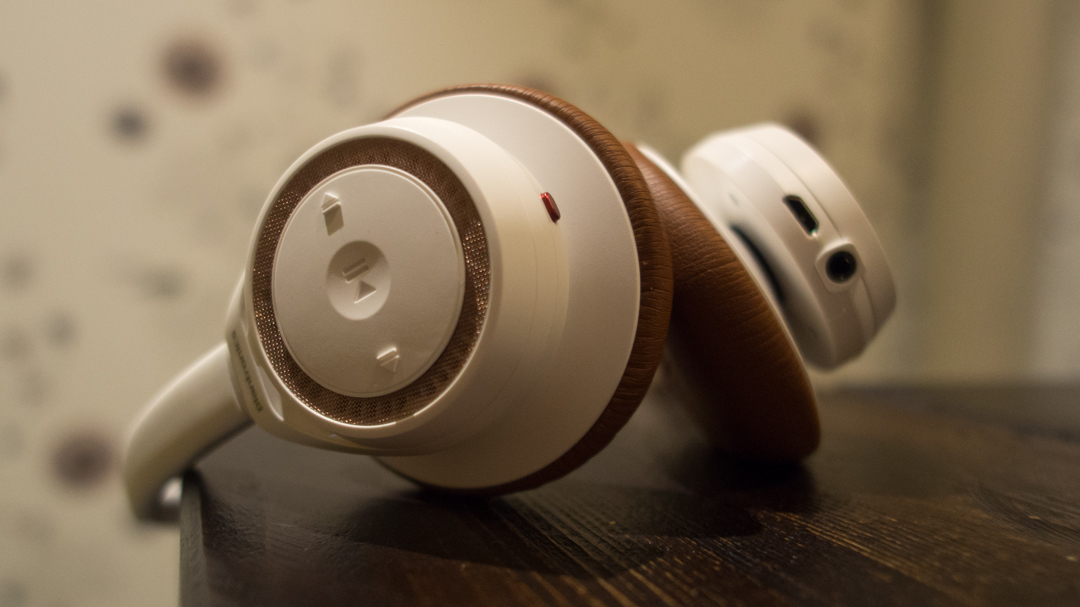TechRadar Verdict
If you're looking for a set of wireless headphones to wear all-day long and look good doing it, check out the Plantronics BackBeat Sense. The useful features, universal compatibility and long battery life make this a solid deal.
Pros
- +
Attractive design
- +
Lightweight
- +
Universal controls
- +
Easy to use
Cons
- -
Ear cups don't fold
- -
Might be pricey for some
Why you can trust TechRadar
It's a difficult task to find headphones that excel at everything they attempt to pull off, especially when they're trying to do a heck of a lot. Plantronics' recent efforts in portable audio hinted at achieving just that, pairing slick design with exceptional and reliable technology.
The new BackBeat Sense get a little closer to actually hitting the mark with a lightweight build that offers a satisfying sound, long-lasting battery and comfort (lots and lots of comfort). The $179 (available for £149, AU$249 in September) asking price isn't cheap, but the value offered makes for a sensible purchase that sets the bar for rival wireless on-ear headphones.
Design
Plantronics's BackBeat series of headphones tread similar design territory to that of Philips' Fidelio family, each pushing hard to make products that embody an office-friendly vibe that translates well to a day working in the cafe.
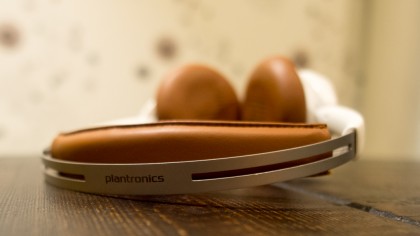
The BackBeat Sense make a sharp first impression with a lightweight, stainless steel headband. But what's best about it, besides the way it looks, is that it never comes into direct contact with your noggin. Instead, a flexible band of rubber is tucked underneath it, coated in a comfortable, leatherette material. During a product demo, a Plantronics representative told me that, with the Sense, the company strived to fit 99% of heads. And although these headphones might look like they only accommodate to tiny heads, I was impressed with how far they stretched.
The white plastic sidearms add stability and some style points with a matte-textured look. They also offer a good amount of flexibility for the ear cups, allowing them almost a full 180-degrees of swivel action. This makes it easy to wear these face down on your chest, which is a small design touch that I love.

Plantronics really shows its stuff with the ear cups. On their outside, the cups are covered in smooth plastic and feature a svelte copper grille and rubber face buttons. Flipped over, their leatherette pads are cleverly perforated with "L" and "R" to illustrate how to put the headphones on correctly.
On the right ear cup, there is a microUSB charging port and 3.5mm port for wired connections. Near the sidearm is a power switch that doubles as the Bluetooth pairing toggle. The only feature placed on the rubber cap here is the phone button, which can pick up or hang up calls. Lastly, the LEDs indicate battery level and connectivity status.
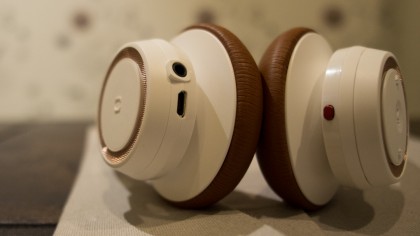
The left ear cup is built with features you'll be using more regularly. First off, the copper grille cap rotates, allowing for easy and intuitive adjustments of music or call volume. On the bottom of the cup, there's a voice mute button. Plantronics placed the play and pause button, as well as dedicated buttons to skip and reverse tracks on the rubber cap. The button layout is easy to learn without making many silly mistakes in the process.
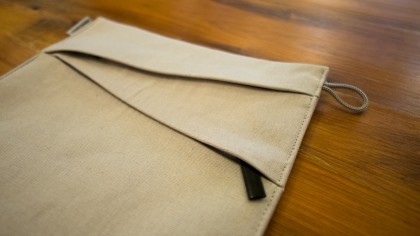
Included in the box are a few goodies. There's a microUSB cord for charging, a 3.5mm cable for wired listening when the battery depletes and a fancy canvas tote that I love.
Performance
Based on how good the Plantronics BackBeat Sense look, I hoped that they would also impress performance-wise. Thankfully, these totally deliver the goods.
The sound is full, punching through with accuracy and detail. Bass-lovers might be after something with more "oomph" but overall, each sound frequency is well-represented in a variety of genres. Simply put, these deliver the balanced presentation that I'm after in a set of headphones.

Its fit is comfortable, even after sessions stretching past the 2-3 hour mark. The leatherette coated rubber strap plays a huge part in this, but it's the frame of the BackBeat Sense that gets the credit here, as it just sits on your ears as opposed to pressing hard into them.
These cans don't offer active noise cancellation like it's over-ear next of kin, the BackBeat Pro. Nevertheless, I was impressed off the bat by the work that the ear pads do in suppressing outside noise. I'd say they cut out about 50% of the total noise, depending where I was.
Call quality is exceptional, and the recipient on the other end could always hear me. The Bluetooth signal is strong, allowing me to walk all around my apartment while leaving my phone in one place. Battery life, which Plantronics states will last up to 18 hours, is excellent. During my several weeks of testing, I put the headphones through three battery cycles, each averaging about 18 hours, if not a little more, due to listening at low volumes most of the time.
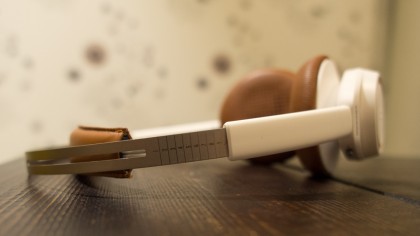
The button interface is easy to learn. Whether I was using an Android or iOS device, each function and button works as intended. The BackBeat Sense also feature sensors that detect whether the headphones are on your head. If you're listening to music and remove them suddenly, the music will pause and resume once you place them back on your ears. What's even more useful is that, if the headphones aren't on your head and you get a call, the headphones will automatically route the audio back to your phone and vice versa. It's a major headache-saver.
Final verdict
Plantronics' BackBeat Sense is a home run on nearly all accounts. The design yields comfort and appeal. Its sound performance, battery life and features all deliver without a hitch.
Usually, there are a few things that I'd like to see fixed in a set of headphones. In the case of the BackBeat Sense, I wish that the ear cups could fold into the headband to be ultra-portable. But for a set of headphones that gets so much right, I can't nitpick. These cans are worth every penny for someone looking to leap for a classy-looking set of wireless headphones.
Cameron is a writer at The Verge, focused on reviews, deals coverage, and news. He wrote for magazines and websites such as The Verge, TechRadar, Practical Photoshop, Polygon, Eater and Al Bawaba.
